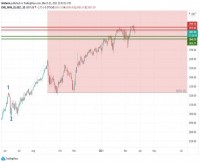|
Opalesque Industry Update - the eVestment|HFN Research Division has a preliminary look at December’s hedge fund returns (final report out in two weeks): 2011 Hedge Fund Broad Performance & Investor Trends: • HFN Hedge Fund Aggregate Index ended 2011 down 4.5%. This is the second worst year on record for the hedge fund industry, behind 2008, and only the second year the HFN Hedge Fund Aggregate Index has been negative. • Hedge fund industry AUM ended the year estimated at $2.48 trillion. This is a slight, $3.7 billion, increase from 2010. The increase was primarily driven by investor allocations. • Investors added a net $34.9 billion to hedge funds in 2011, however the trend in the second half of 2011 was negative. In the first half investors accounted for a net $73.6 billion increase in AUM and in the second half accounted for an estimated net reduction of $38.7 billion. • December investor flows appear to again be negative. If continued reported data holds this to be true, December will be the fourth straight month of net investor redemptions and resulting in five of the six months in the second half having net redemptions. • Fund performance reduced hedge fund industry AUM $31.6 billion during the year. The industry’s estimated asset weighted return in 2011 was -1.2%. Compared to the -4.5% for the equal weighted HFN Aggregate Index, this is a clear indication that larger funds outperformed smaller funds during the year. Winners and Losers in 2011. Winners first: 1) Mortgage Strategies: The HFN Mortgages Index ended 2011 +11.3%. Nearly 9 out of 10 mortgage related strategies reporting to eVestment|HFN were positive in 2011 and all but 2 outperformed the hedge fund industry. The group took in an estimated $6.3 billion in net new assets for a growth rate of nearly 12%, compared to aggregate industry growth rate of 1.4%. 2) Fixed Income/Credit Strategies: Credit markets benefited as a relative safe haven from higher volatility commodity and equity markets in 2011. The average FI focused strategy returned +3.8% in 2011 and funds targeting munis and sovereign credit performed even better, +4.1%.The group took in an estimated $21.5 billion during 2011, however they were not immune from the negative second half trend of outlfows. Performance increased FI fund AUM an estimated $30 billion during the year for an asset weighted return of +4.7%, again indicating that larger credit funds generally performed well. Even EM debt strategies were up for the year, +1.7%, despite a terrible year for aggregated EM fund performance. 3) Merger Arbitrage: The group was able to follow good returns in 2010 with positive returns in 2011 in the face of broad equity market volatility and in doing so, investors allocations jumped. The HFN Merger/Risk Arbitrage Index was +3.1% in 2011 and funds dedicated to the strategy saw AUM increase an estimate 11% due to net new allocations. 4) Healthcare Sector Funds: The group returned an average of +3.2% in 2011 while the average of all equity strategies was -6.4%. Investors were net redeemers from healthcare funds during the year, but compared to the aggregate of all equity related strategies, redemptions were minimal. 5) Large Multi-strategy Funds: The average performance from all multi-strategy funds reporting to eVestment|HFN was negative in 2011, -3.5%, but on an asset weighted basis, the group returned an estimated +2.2%. While this is not knock your socks off excellent, it shows diversification among large funds paid off during the year. Multi-strategy fund AUM also grew at an above average rate due to investor flows in in 2011, nearly 4%, and they also bucked the negative flow trends in the second half of the year, taking in an estimated net $4.5 billion while the industry was bleeding assets. “Losers” or Laggards: 1) Long/Short Equity: The HFN Long/Short Equity Index underperformed the S&P 500 TR Index by the largest margin since the year of the Russian financial crisis, 1998. The HFN Long/Short Equity Index was -6.52% in 2011 and the group had aggregated net redemptions in 2011. 2) Emerging Markets Equity: It is important to make the distinction here thatEM debt strategies generally performed well in 2011, however the vast majority of EM strategies are equity focused. The HFN Emerging Markets Index was -14.9% in 2011 and EM equity focused funds were -15.5%. Returns were worst among funds investing in India which fell an average of over 30% (massively underperforming the SENSEX), but both Russia and MENA strategies were down significantly as well. Investor flows indicate allocators may have anticipated the EM slide. Allocations to EM funds were below average in 2010 and while the industry was taking in significant AUM to begin the year, EM fund flows were nearly flat and then redemptions outpaced the industry AUM slide in the second half of 2011. 3) Commodity Strategies & CTA/Managed Futures: This group is a mix between positive and negative news, but based on performance alone, it was not a good year for many. The HFN CTA/Managed Futures Index was -3.92% during the year and the index constituent’s asset weighted performance is estimated at -5.4% which implies larger funds performed slightly worse. Despite poor performance (Metals -21.1%, Natural Resource related EQ -13.5%, Energy focused EQ -10.6%) both CTA and commodity sector funds (which includes many CTA’s) saw investor flows increase AUM in 2011 and even rise in the second half of the year. The bright spot among commodity fund performance were aggregate returns from Agri-focused funds which returned an average of +6.5% in 2011. 4) UCITS Structured Hedge Funds: Relative to their non-UCITS counterparts, funds structured to comply with the UCITS framework performed poorly in 2011. The HFN Hedge Fund UCITS Index was -8.38% in 2011 (vs. -4.5% for the industry) and the HFN Long/Short Equity UCITS Index was -11.44% in 2011 (vs. -6.52% for all LS Eq funds). Performance by Fund Size:
eVestment HFN has compiled a complete breakdown on larger vs. smaller fund performance by strategy and market sector for 2011 which, to keep this note a reasonable length, is available upon request. Additionally, fund flow estimates by performance and fund size can be calculated within a reasonable time frame. Summary: 2011 will be remembered as a difficult year for the hedge fund industry. The second half of the year was particularly difficult in terms of both performance and investor flows. Throughout the year, aggregated exposures shifted to a more defensive stance and while exposures to volatility in equity markets were reduced, so too was exposure to market rallies. Amid the difficulty there were clear winners which again shows that investor success in the hedge fund industry is not absolute, but rather requires an acute understanding of macro-economic trends and the ability to access and allocate to funds positioned to take advantage. Allocators to the industry have a history of supporting success and the muted, but negative flow trends seen in the second half of the year were less likely a sign of broad investor interest declining, but rather a natural and likely appropriate repositioning of AUM to industry leaders. There were some above average redemptions from big funds which performed well in 2011 which is likely a factor of diversification of profits. Lastly, after regressing industry results throughout the year to a group of benchmarks representing the primary exposures of the industry, it appears the industry enters 2012 braced for more volatility. BG | |||||||||||||||
Industry Updates
HFN: hedge funds ended 2011 down 4.5%, AuM at $2.45tln
Wednesday, January 11, 2012
|
|





 RSS
RSS







